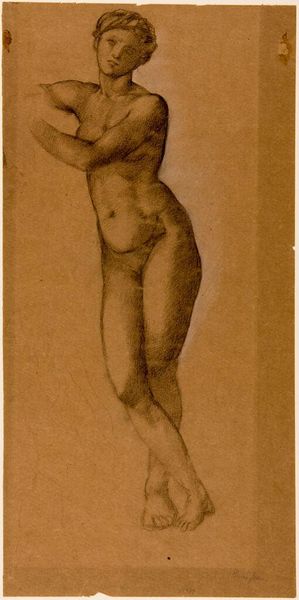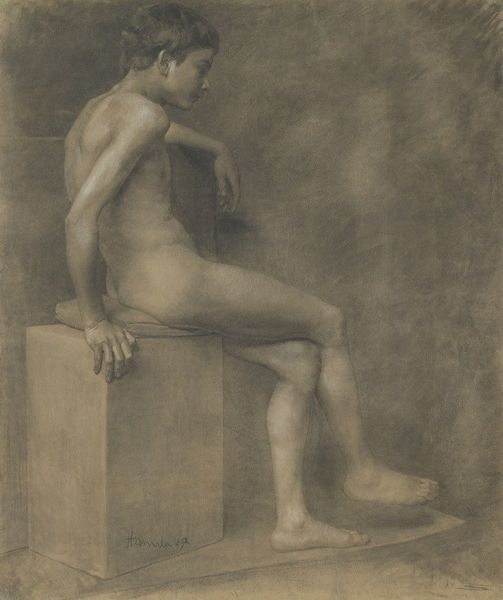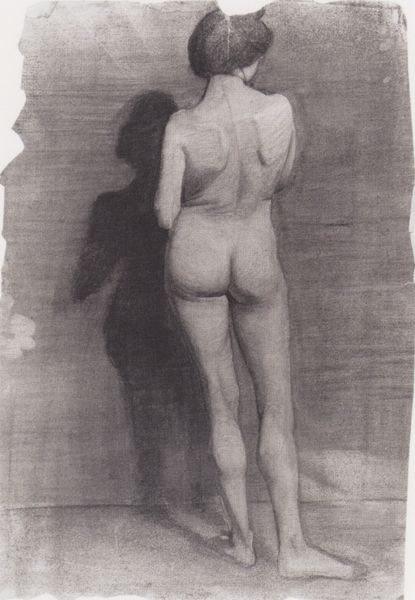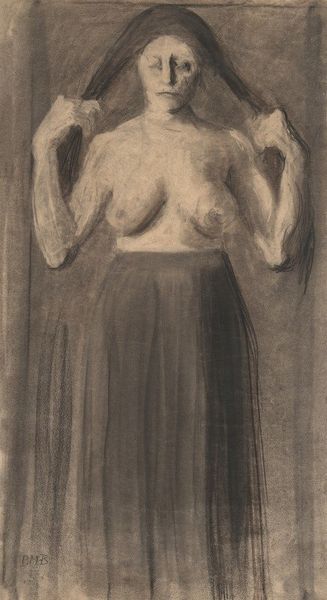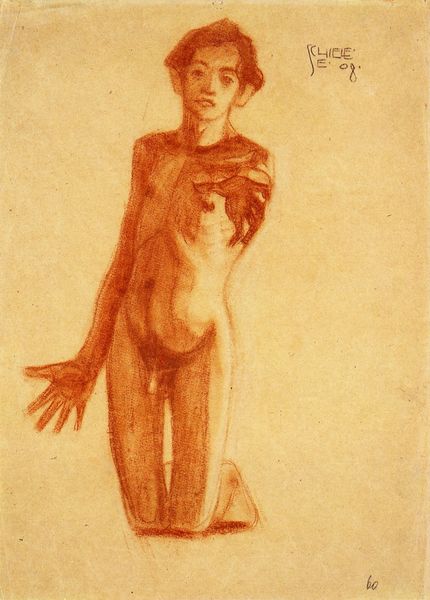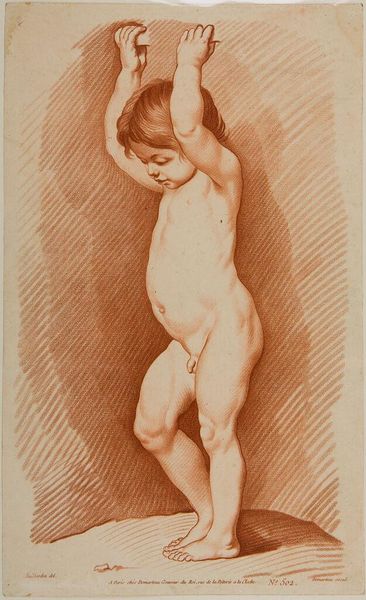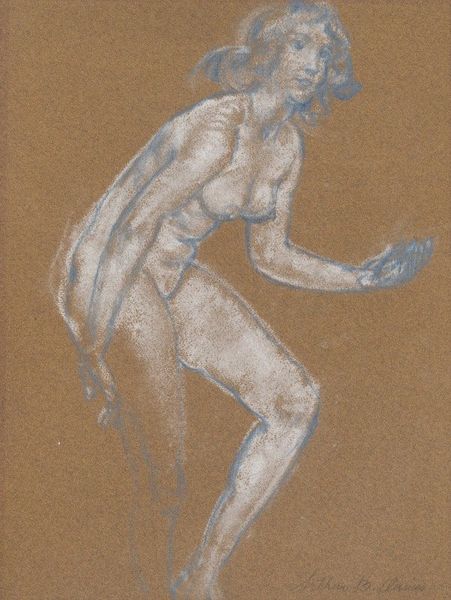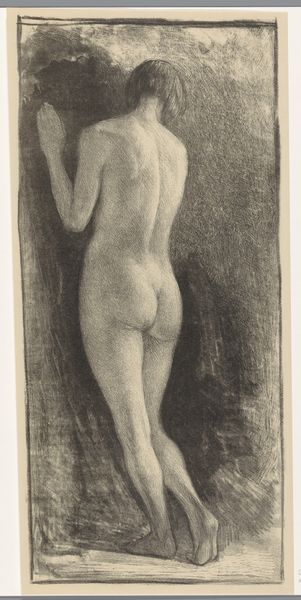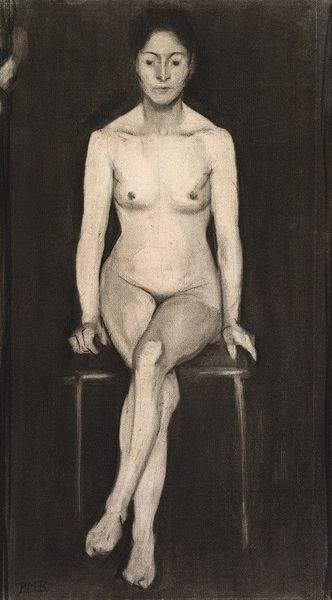
photography
#
figuration
#
photography
#
united-states
#
nude
Dimensions: 8 3/4 x 4 11/16 in. (22.23 x 11.91 cm) (image)
Copyright: No Copyright - United States
Editor: Okay, next up we have "The Spider" from the early 20th century by William B. Dyer, currently at the Minneapolis Institute of Art. It's a photograph, rendered in a sepia tone that gives it a dreamlike quality. The subject is a nude figure in mid-motion, arms reaching, legs intertwined, with a fuzzy, almost ghostly finish. It strikes me as incredibly ethereal and fragile, yet also powerful in its pose. What do you make of it? Curator: Fragile, ethereal...I feel that. It reminds me of certain photographs by Julia Margaret Cameron, not just the technical softness, but the seeking after something *beyond* simple representation. Looking at "The Spider," I see the echoes of symbolism. What does a spider evoke? For me, a sort of weaving... a tapestry… a bringing together of threads, but also a capturing, perhaps. Notice the way the model's limbs intertwine; it suggests both grace and a feeling of being caught, or ensnared. Do you see that, or am I just projecting my own anxieties? Editor: I do see the entrapment element now that you mention it, even though the dancer has great extension. It's like the pose has dual meanings! The title "The Spider" makes more sense to me now. How does the use of photography as a medium play into all this? Curator: Well, photography in this era was still finding its voice, often emulating painting to gain acceptance. So Dyer is deliberately softening the image, adding a painterly touch. Think about it - light trapping a moment, turning flesh into fleeting dream. And a dream, as we know, is often woven of fears, desires, and long-lost connections, spinning from some inner, hidden part of us. Perhaps that’s the real "spider" at work here...in the depths of the model, in the photographer’s mind, in our own response to the work! Editor: I didn't consider it on those terms before. It makes me see how intention and chance can meet in art. Curator: Exactly! Sometimes, the best art leaves space for *our* threads to become part of the picture, creating a unique web of interpretation. That’s what keeps it alive, don’t you think?
Comments
No comments
Be the first to comment and join the conversation on the ultimate creative platform.

